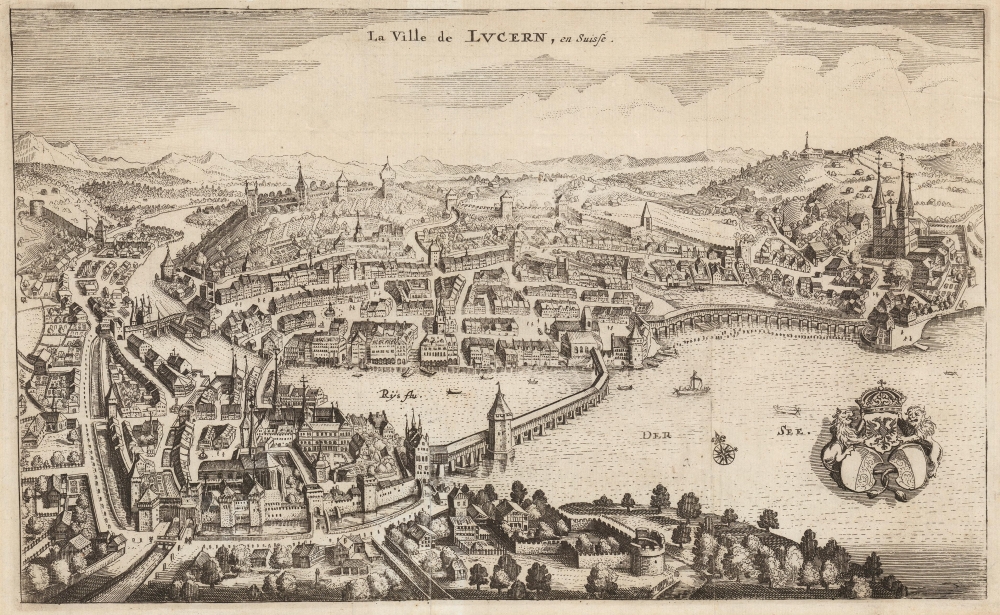1723 Pieter van der Aa Bird's Eye View of Lucerne, Switzerland
Lucern-vanderaa-1723
Title
1723 (undated) 8.5 x 13.5 in (21.59 x 34.29 cm)
Description
Publication History and Census
Leiden publisher Pieter van der Aa engraved this plate in 1723 for inclusion in Johann Jakob Scheuchzer's Ouresiphoites Helveticus, a record of that Swiss scholar and herbalist's journeys in the Swiss Alps. The book is well represented in institutional collections, although the plate in question appears to be scarce on the market.Cartographer
Pieter van der Aa (1659 - 1733) was a Dutch publisher of maps and atlases active in the late 17th and early 18th centuries. Van der Aa was born in Leyden in 1659. At nine he was apprenticed to a local bookseller and, by 21, had established his own publishing, printing, and auctioneering house. In 1692 Van der Aa was appointed to be one of the High Commissioners of the Booksellers Guild. During his long and impressive career Van der Aa produced thousands of maps, including a vast 28 volume atlas containing no less than 3,000 maps. Few of Van der Aa's maps were original productions, most being copied from the work of earlier cartographers. Nonetheless, when one of Van der Aa's rare original pieces does appear, his style, with unusual projections, elegant engraving, and precise detail, is instantly recognizable and highly desirable. He also pioneered the cartographic idea of separating border artwork from the map plate itself such that every map in a collection could have a similar elaborate border without actually having to re-engrave the complex plates. This technique was used to great effect by later 18th century publishers like Brion de la Tour. Following Van der Aa's death in 1733, his much admired Nouvel Atlas was reissued by the Dutch firm of Covens & Mortier. Today Van der Aa's work is admired for its fine delicate engraving and unusual projections and is considered highly desirable among collectors. More by this mapmaker...

